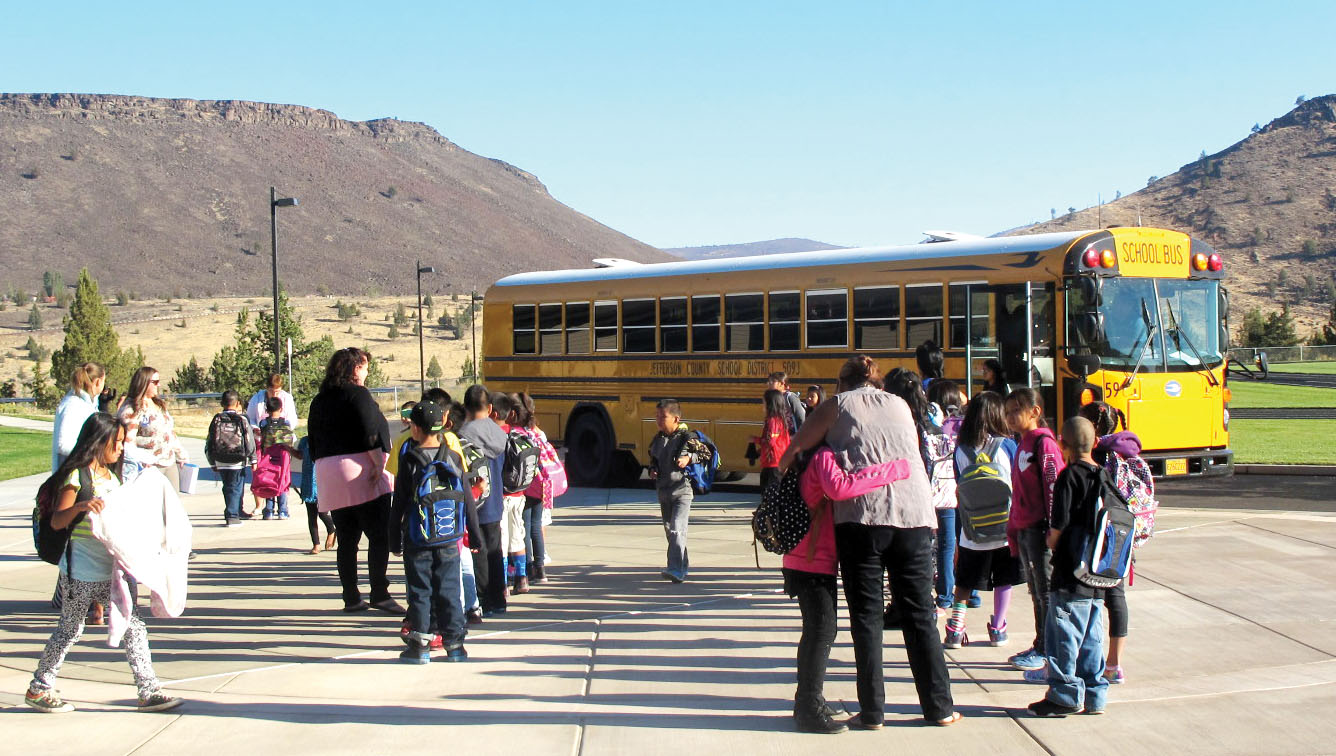The Education Committee and Tribal Council have been working on a new policy agreement that will guide education services to tribal members, as provided by the Jefferson County School District 509-J.
Education Committee members—Ardis Smith Clark, Deanie Smith and June Smith—met last week with Tribal Council on a draft of the agreement. Ardis is a teacher at the Warm Springs Eagle Academy; Deanie is the Confederated Tribes’ Language Program director; and June is the director of the Warm Springs Boys and Girls Club.
The tribes will share the proposal with the school district board, and then work toward a final multi-year agreement. The proposed new agreement includes some significant changes, in comparison with the current agreement. “I think we’ll see positive changes,” said Deanie Smith.
The current education agreement, or memorandum of understanding, will expire this summer; and the Tribal Council and the Education Committee have been working over the past year on a new MOU.
One of the problem areas in the current agreement is its vagueness in terms of measurable benchmarks, the Council and Education Committee agreed.
The proposed new agreement would provide for greater information sharing as to student performance, attendance, drop-out rates, expulsions and suspensions.
Specifically, a provision in the proposal states:
“The Jefferson County School District 509-J will provide data on minor and major referrals, expulsions, suspensions, attendance, number of students below, at, or exceeding benchmarks or grade-level…”The information would be shared quarterly with the Education Committee. Additionally:
“The school district administrators will communicate with the Education Committee concerning assessment tools used with CTWS students. Input from the Education Committee will be used to maintain or make changes to instructional strategies that will best meet the outcome goals.”
Some other proposed changes:
The school district board, the Tribal Council, BIA agency superintendent, and invited guests would meet three times each year. The purpose of these meetings—in August, January and June—would be to evaluate how the agreement is working, address possible amendments, promote collaborative communication, and work toward a yearly joint education report.
The draft agreement suggests that the school district board hold their regular meeting one-third of the time in Warm Springs. This would make sense because about one-third of the district students are tribal members, said Ardis Smith Clark.
This provision also goes toward greater parent involvement, another focus of the draft agreement.
Another proposed provision is intended to address the Native American Language Act of 1990.
The wording of this act is powerful in its mandates to school districts, said Deanie Smith. Wording of the proposed agreement is equally strong:
“The cultures and languages of the Confederated Tribes of Warm Springs are unique, and the 509-J school district and the BIA have the responsibility to act together with the Confederated Tribes to ensure the survival of these unique cultures and languages—Warm Springs, Wasco and Paiute.
“The Confederated Tribes possess a special status that recognizes distinct cultural and political rights, including the right to continue separate identities. The traditional languages of the Warm Springs, Wasco and Paiute people are an integral part of the cultures and identifies, and form the basic medium for the transmission and thus the survival of the tribes’ cultures, literatures, histories, religious and political institutions and values.”
In meeting with parents and students, the Education Committee has heard a consistent response that tribal culture and history should have a greater place in the schools. This approach would help address absenteeism, and the drop-out rate, said Deanie.
The Culture and Heritage Department offers language lessons to students at all grade levels. The teachers are fluent speakers, or advanced language learners. But more could be done in this area, such as making the Native language class a credited class.
The issue to be addressed is serious: Currently, more than half of tribal member Madras High School seniors are in the Warm Springs Roots program. Roots is an excellent alternative education program, but most seniors should be in school at the high school, the Education Committee members agree.
Regarding curriculum, the draft agreement says:
“The Confederated Tribes and the school district will collaborate to develop and implement historically accurate, culturally embedded, place-based, contemporary and developmentally appropriate American Indian curriculum, assessment tools, and instructional materials that are aligned with the Common Core State Standards and state standards to educate all students in the district about the history and culture of the tribes and Native people.
“The tribes agree to be a resource for information and materials—the People’s Plan, the Treaty of 1855, our history—to assist in the development of the curriculum.”
The draft agreement also calls for the district to sponsor a Native Club for all students in grades 6-12 who desire to participate.
These are just some of the provisions. The Education Committee and Council said parents will be given copies of the agreement, so they can refer to the document, and help with the implementation. Success in education is a responsibility of the school district, but the effort really starts at home and in the community, said Tribal Councilman Orvie Danzuka.
When the Education Committee met with Tribal Council last week, the first question was whether the current Council wishes to work toward finalizing the agreement before the end of the term of the Twenty-Sixth Tribal Council.
Council members said they wanted to complete the work, rather than have a new Council start over again this summer. The current Education Committee and Council have already put time and effort into the current draft, and the matter should be completed this Council term, they said.
The Council then appointed a team consisting of the Education Committee, and Council members Evaline Patt and Orvie Danzuka, to put together the final draft. They will work with the school district board in coming up with a final version acceptable to the tribes and the school district.


